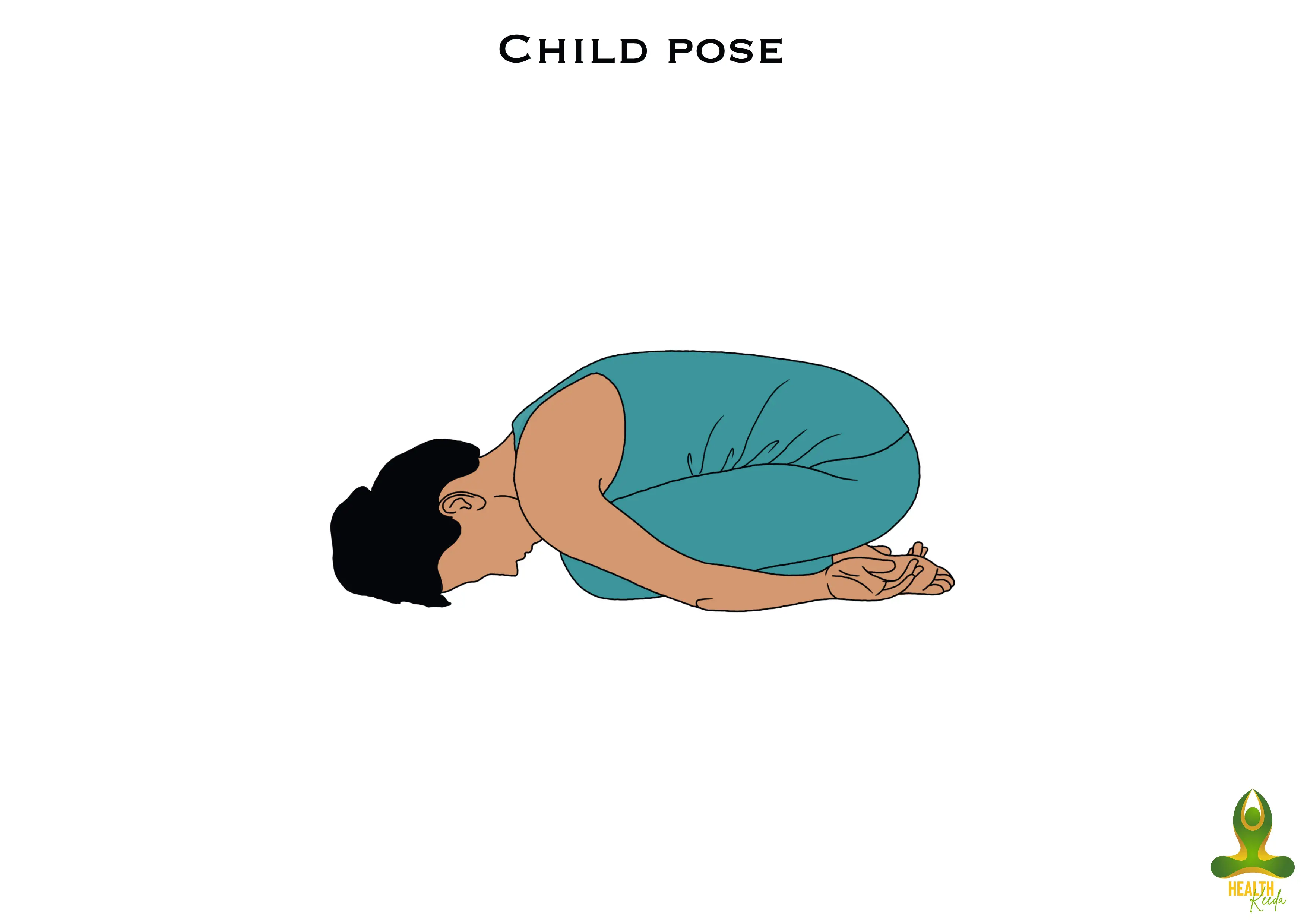7 Yoga Poses for Bulging Disc
The anatomy of the spine is very impressive, as well as its functions. Spinal column generates from the base of the skull lengthening down to the pelvis. When in the womb, it develop until the time of delivery. After...

The anatomy of the spine is very impressive, as well as its functions. Spinal column generates from the base of the skull lengthening down to the pelvis. When in the womb, it develop until the time of delivery. After birth, it takes several other changes as the child continue to grow. There are numerous parts of the spine namely vertebrae (facet joints), nerves, intervertebral discs, and soft tissues (including muscles, tendons and ligaments). All of these parts contribute to the complex structure of the spine. They provide support for various functions and everyday activities.

Functions of Spine
There is a wide range of functions that spine plays. It is not easy to point out a specific role that we may call to be the most important function of the spine. But maybe it is the protection of the spinal cord through which the brain transfer signals via spinal nerves. Apart from it, spinal column provides the body, support and balance. It enables us to move in different directions depending on our own level of flexibility. It also functions as a shock absorber when the body goes through a sudden movement.
Many names for one spine
Even though spine column is one long bony structure. It is further subdivided into different parts with different names. Starting from above the first seven vertebrae is termed cervical spine. Next 12 are known as the thoracic spine. Coming down, the next five are named lumbar spine. And the most lower parts are sacrum followed by coccyx. In between each vertebra, there is a cushion called inter vertebral discs. They not only allow the body to make movements but also works as shock absorbers.
Causes of Bulging Disc
Out of all parts, cervical and lumbar spine is the most vulnerable to injury or trauma. If the health of the spine deteriorates, there will be a severe damage to the quality of life. But how it does it happen in the first place. Well, just like any other health problems, the cause is similar. The major culprit behind the development of a disease is most often sedentary lifestyle, poor eating habits and genes. Lack of exercise causes the spine to become very fragile over years. Though in the case of the spine, poor body posture plays a significant role too.

Who is most vulnerable?
Most commonly a bulging spinal disc and herniated disc occurs in the old age. But a young person may also fall prey to this condition. Being involved in an accident or injury will put intolerable pressure on the spine. This pressure results in bulging or herniated disc. The pain is quite excruciating and person experience difficulty throughout the day. Sitting, walking and even resting becomes painful. People with severe condition find it hard to fall asleep due to pain. Fortunately, through yoga, you can recover your disc completely. Let’s move to the poses that deals with bulging disc.
Important Note: Consult with your doctor before you start practicing. Practice each pose 3 times. The ones to be practiced with one leg can be done 6 times that is 3 for each side. Strictly avoid practicing forward or backward bending and twisting yoga poses as they may worsen the condition.
It is best to learn these poses under the guidance of an experienced yoga instructor or therapist. If you choose to practice yourself at home, be slow and careful while you move your body. If the pain aggravates discontinue the practice. Avoid any pose that doesn’t feel comfortable. If your condition is too severe at the moment better wait for it to get better enough to start the practice.
Read to know more: Healing Variation of yoga poses.
7 Yoga Poses for Bulging Disc
1. Bridge Pose (Kandharasana)
Kandharasana is probably one of the most beneficial poses of a bulging disc. Lift the spine as far as you feel comfortable. Its practice will pull the bulging disc back to where it belongs.
2. Easy Bow Pose (Saral Dhanurasana)
Gently lift your lower legs and the upper part of the body in saral dhanurasana. Practice 3 times. Take rest in between to let the body relax. It will ease the pain arising from a bulging disc.
3. Triangle Pose (Trikonasana)

Be very careful while practicing Triangle pose with a bulging disc. Most often people tend to bend both forward and sideways in Trikonasana. The bending is only sideways. You may use a block or anything stable to place your hand.
4. Easy Cobra Pose (Saral Bhujangasana)
Easy cobra pose is quite comfortable and will make you feel relaxed. Adjust the position of your body till you feel comfortable. The pose is a boon for any kind of back troubles.
5. Makarasana (Crocodile Pose):
Be careful about the position of your elbows in makarasana. Slowly move your one leg and raise the heel to touch the buttock gently. If you aren’t that flexible just simply move the leg as far as possible gently.
6. Shalabhasana (Locust Pose)

The simplest version of shalabhasana is quite beneficial for a bulging disc only when the condition is not too severe. Raise your leg and arm only as high as it feels comfortable and returns. If you feel you can hold the pose, stay for a few seconds.
7. Shavasana (Corpse Pose)

Relax the body in Shavasana after practicing these yoga poses. Use a round pillow below your knees and another pillow below the head. You may also practice it on the bed for more comfort.
These poses if practiced right will ensure the recovery. Time of recovery depends on the severity of your condition. It is best to follow a yoga program afterward to keep the spine strong for the rest of your life.
Yoga Poses to Avoid
1. Balasan (Child pose)

Balasan gives stress to the back and spine. It may also encourage the chance of breaking bones. Instead of trying Balasan without support, try to take the support of a thick blanket.
2. Marichyasana (Sage’s pose)
This stance has four versions, the first of which is the most dangerous for a herniated disc. Marichyasana 1 demands you to sit with one leg bowed, and the other stretched out. Then, wrap one’s hand around the knees bent and bow forward.
3. Uttanasana (Standing forward bend)

Your legs are stretched wide in this position, almost at a 180-degree straight. You must then stretch downward. This pose works well for activating your core and stretching your inner thighs. However, it can worsen a herniated disc.
4. Baddha Konsana (The Butterfly Pose)
This is a seated position in which the bottoms of your feet touch. While the position extends the hips, belly, and thighs, it can damage the back.
Things to consider while practicing Yoga
Yoga asana should be performed on an empty stomach. If you feel weak, drink a small amount of honey mixed with lukewarm water. Before beginning Yogic exercises, the bladder and bowels should be empty. Start practice sessions with a prayer to bring spiritual enlightenment. Yogic practices should be done gently and with the attention of the body and breath. To avoid injuries, a warm-up or stretches must be performed before asana.
Asana should be practiced slowly and gradually. Try eating Sati cuisine without meat, onion or garlic. Before beginning your yoga practice, drink plenty of water. Wear comfortable clothes. Use a mat for grip. Do not hold your breath for a long time. Breathe deeply from the nostril, not the mouth. Do not put extra stress on the body.
Is yoga good for bulging discs?
Many yoga poses help to reduce backache and stiffness caused by Bulging discs. E.g., kandharaasan, Saral Dhanurasana, and other mentioned poses. However, one should avoid the child’s pose, sage pose, head-to-knee pose, etc.
What should I avoid with a bulging disc?
People suffering from bulging discs should avoid sitting for a long time. They should also avoid bending activities such as feeding a pet, vacuuming, laundry, gardening, etc.
How do you heal a bulging disc naturally?
Yoga is one of the best methods to heal bulging discs. Give yourself time and avoid putting stress on your back. Sit and stand straight; do not slouch. Get enough sleep and consume organic products. Also, you need to distance any alcohol or drug consumption.
Can Yoga Help a Herniated Disc?
Yoga is the best way to improve body posture; it reduces mental stress, improves blood circulation, and supports spine muscles. Practice yoga poses suggested by an expert, as some poses might adversely affect the body.

 Astrong
Astrong 































